Exploring Cappadocia – Turkey

We had been in Turkey 3 weeks, Red Roo was safe and secure in the marina, our most pressing and immediate winter jobs underway (many more to go, but they could wait until the new year) and we were itching to get out and explore some more of this wonderful country, we wanted to go inland.
A trip was planned with our Canadian friends Jean & Yolene (Caffe Latte), we hired the car and we were off heading inland (north/east) to explore Cappadocia.
In 9 days we covered 2,500 km taking in some spectacular and hugely diverse scenery. The stars on the map below indicate our travels and the major stops/attractions.

We went from lake country, to the fruit bowl and orchards, to cities with magnificent mosques and history, valleys full of prehistoric rocks, cave houses and cave churches to underground cities that housed more than 10,000 people, then past ski mountains and onto to Roman ruins and some more of the Turkish coast line.
We shall let the photos do the talking.
Day 1. Marmaris – Lake Eğirdir


Lake Eğirdir is Turkey’s fourth largest lake and second largest freshwater body. The total size of the lake covers an area of 482 km squared, the lake lies 917 meters above sea level and has an average depth of 14 meters. This provinces lakes provide water for agriculture and recreation.

Apples are one of the main products of this areas broad open plains and lakes. The province grows 20% of the Turkeys total annual production of apples which is 500,000 tonnes. Turkey grows 5% of the worlds apple production and ranks 4th after China, USA & France.


Day 2. Lake Eğirdir -Konya


Mosque washrooms are built in order for Muslims to perform there “wudu”. Wudu is a washing ritual which takes place as part of prayer. It involves washing the hands, mouth, nostrils, arms, head & feet. This ensures they enter the Mosque to prayer pure. Some of these washrooms are just as enchanting to the eye as the Mosques themselves, and also very practical with the low stools and rails to rest/wash your feet on.






WHIRLING DERVISH ceremonies were started as a form of meditation by Jalaluddin Rumi, the famous Sufi Muslim mystic and poet, in the 13th century. The Persia-born Rumi — who was living in Konya, then the capital of the Turkish Seljuk Empire told his followers, “There are many roads which lead to God. I have chosen the one of dance and music.” He would fast, mediate and then dance to reach a state of unparalleled enlightenment. Inspired, other sects started to spread his dance, called the Sema, throughout the Ottoman Empire. By the 15th century, the order had established rules for the ritual to maintain its myriad traditions.
Dancers wear long white robes with full skirts, which symbolise the shrouds of their egos. On the dancers’ heads sit tall conical felt hats called sikke, ranging from brown to grey to black depending on their sect; these represent the tombstones of their egos. Over the robes, the dancers wear long dark cloaks, which embody the wearers’ worldly life and are cast off during the ceremony. When the dancer is finally wearing only his long white robe, he is assumed to be without fault and ready to start the mesmerising complex whirls that define the Sema.


The dancers, who fast for many hours before the ceremony, start to turn in rhythmic patterns, using the left foot to propel their bodies around the right foot with their eyes closed. Their whirling is fuelled by accompanying music, which consists of a singer, a flute-player, a kettle-drummer and a cymbal player. As the dancers turn, the skirts of their robes rise, becoming circular cones, as if standing in the air on their own volition.
Day 3. Konya – Göreme (Cappadocia)

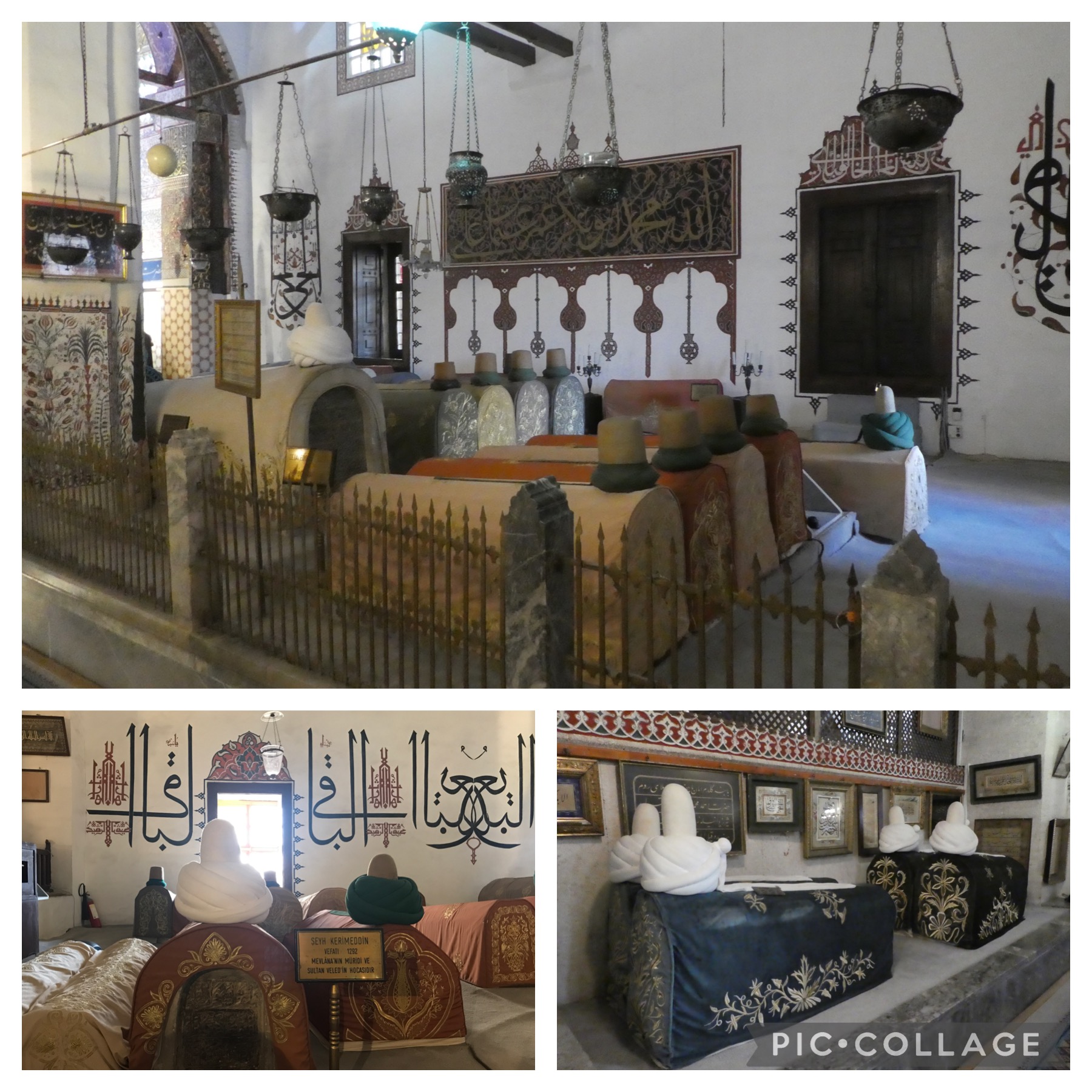


We saw a Shepherd with his flock of sheep at the lake – but he was modern day, on his donkey and watching youtube on his phone, but at least he still had his Shepherd stick!

Caravanserai, is this where the “caravan” lifestyle was invented?
A caravanserai was a roadside inn where travellers could rest and recover from the day’s journey. Caravanserais supported the flow of commerce, information and people across the network of trade routes covering Asia, North Africa and Southeast Europe, most notably the Silk Road. The Sultanhani Caravanserai that we visited was built in 1229 and expanded in 1278 to make it the largest Caravansary in Turkey, it was used in both summer and winter with the summer quarters being 50 x 63 m and the winter quarters being fully enclosed and measuring 33 x 55 meters. To meet the accomodation and other needs of the travellers the caravanserais housed workshops for raffles, rope makers, horseshoes, iron smiths, kitchens, sleeping rooms, hamams (communal baths), coffee houses. Sultanhani caravanserais provided accommodation food and drink free of charge for up to three days for both local and foreigners of different ethnic groups and religions without prejudice.
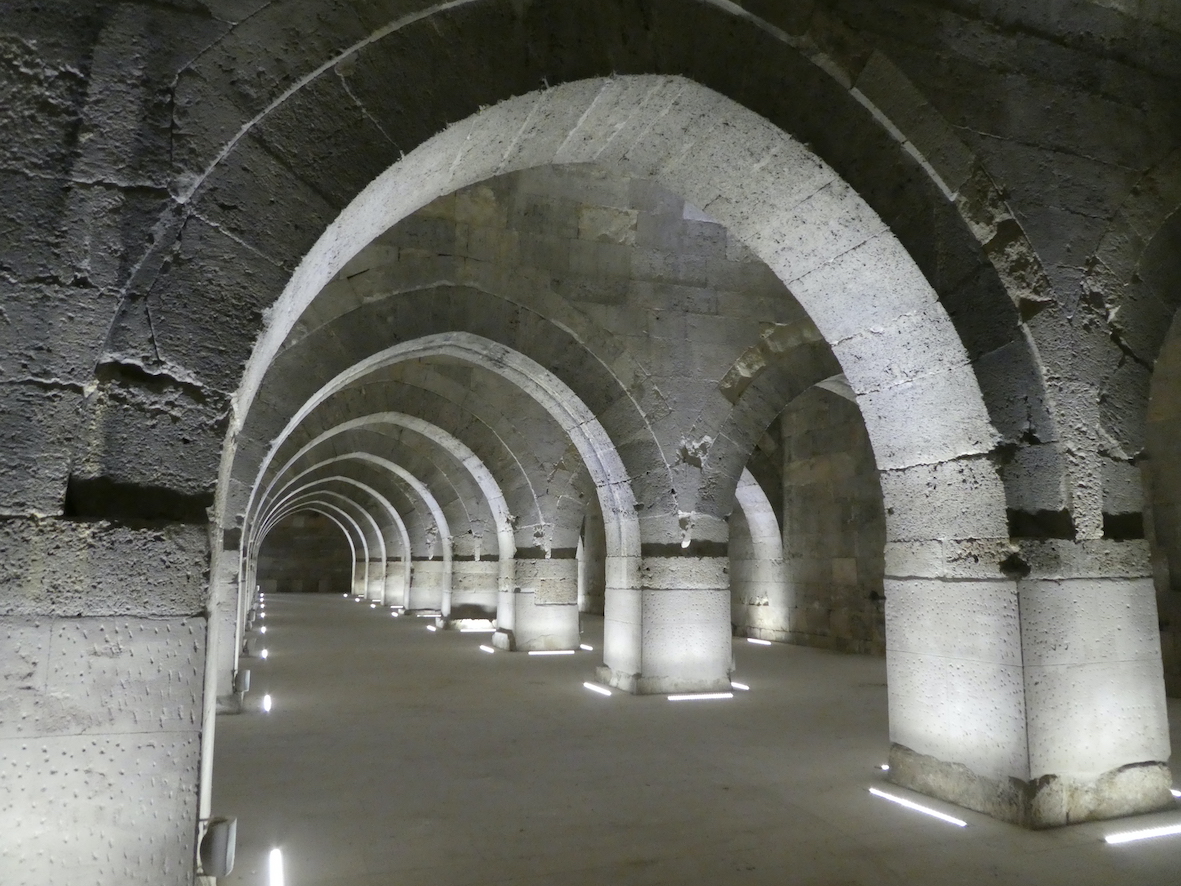

After more hours in the car and a couple of service station pit stops (and rave reviews over the cleanliness of the service station toilets, all no touch automatic and fantastically clean) we drove around a normal looking corner there were suddenly 4 audible gasps and a series of “wow – stop the car!” We had arrived in Cappadocia and our first taste of this fantastic landscape was the town of Uchisar.

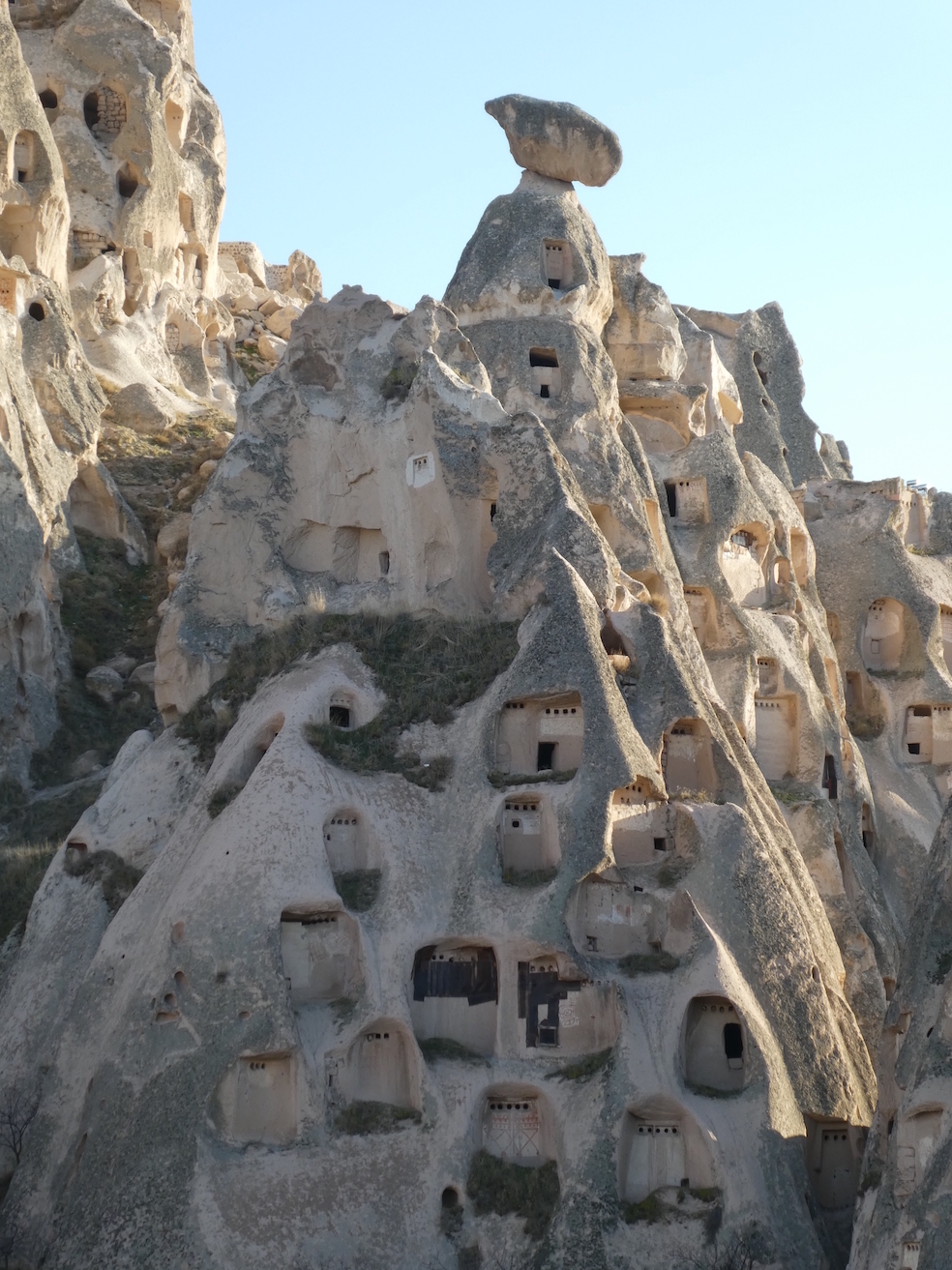



Phil and Jean were astounded by the number of Renault 12’s in Turkey, specifically in the inland Cappadocia region. They began keeping count, and soon ran out of finger and toes! There were thousands, many in great condition. Research informed us that they were actually built in Turkey from 1971 until 2000.
Day 4. Cappadocia
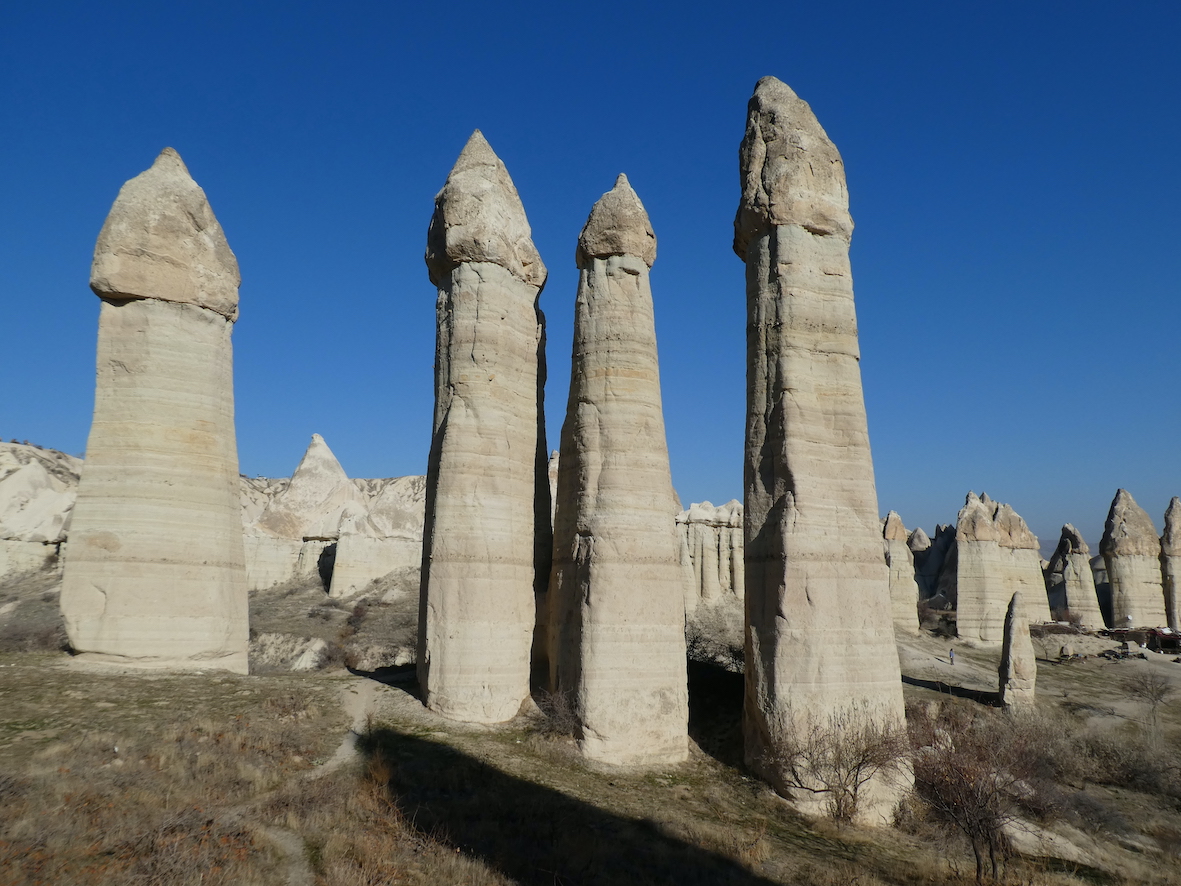

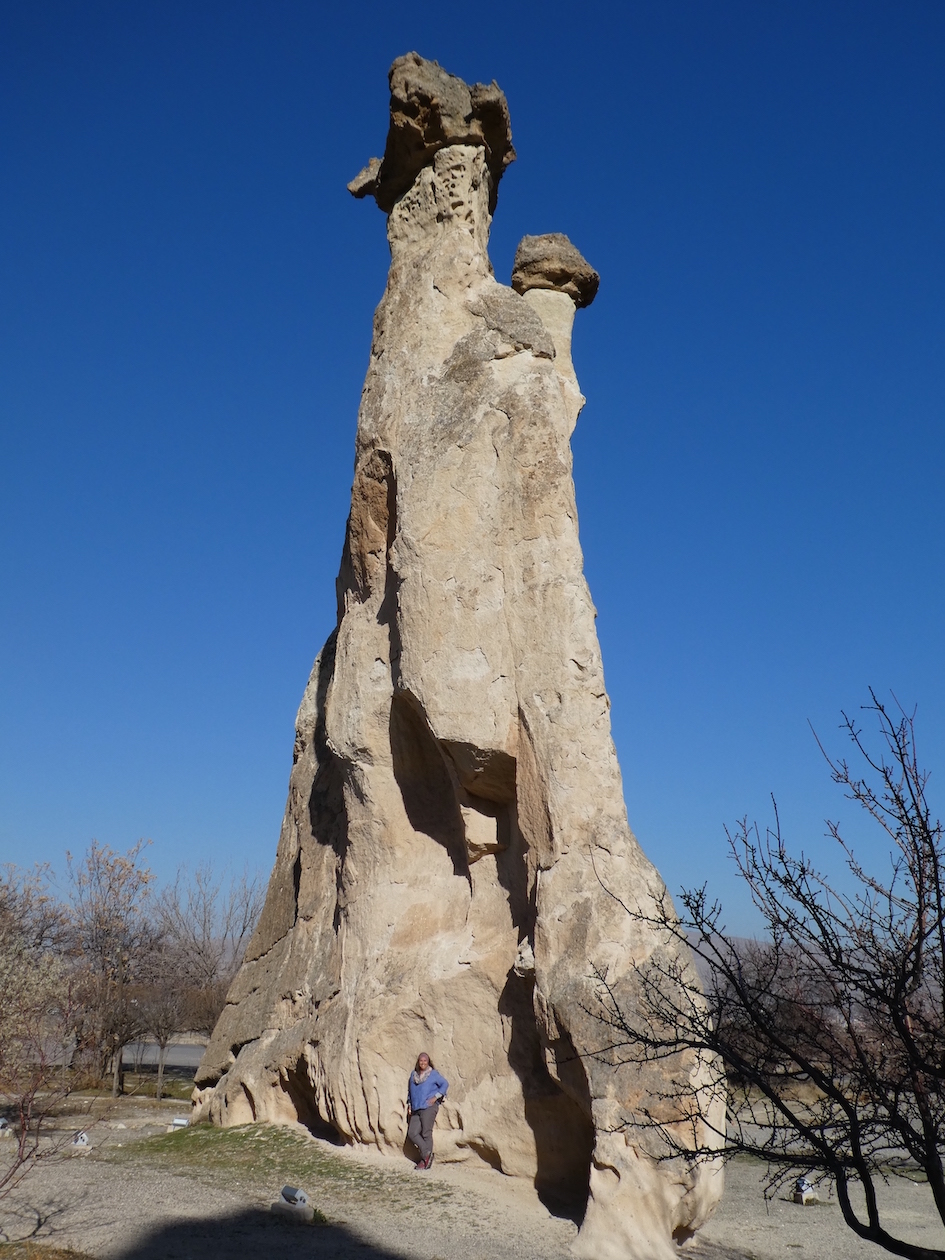

The fairy chimneys are a result of a geological process that began millions of years ago when volcanic eruptions rained ash across what would eventually become Turkey. That ash hardened into “tuff” a porous rock, which was covered by a layer of basalt. Finally, the long work of erosion began. As millennia passed, and rivers came and went the softer tuff wore down (creating valleys) and leaving pillars – some that stand over 40 meters high. The harder basalt erodes more slowly, forming a protective mushroom shaped cap on top, each one is shaped uniquely due to the erosion process (the softer rock closer to the bottom, and harder layers on top), the different colours are due to the minerals within the different rock types at each layer. Just like that a fairy chimney is born – no pixie dust required.


“On Tour in Turkey”


A lovely time was had by all, would we recommend the wine – truthfully no
(we have been too spoilt by good South Australian wine!)


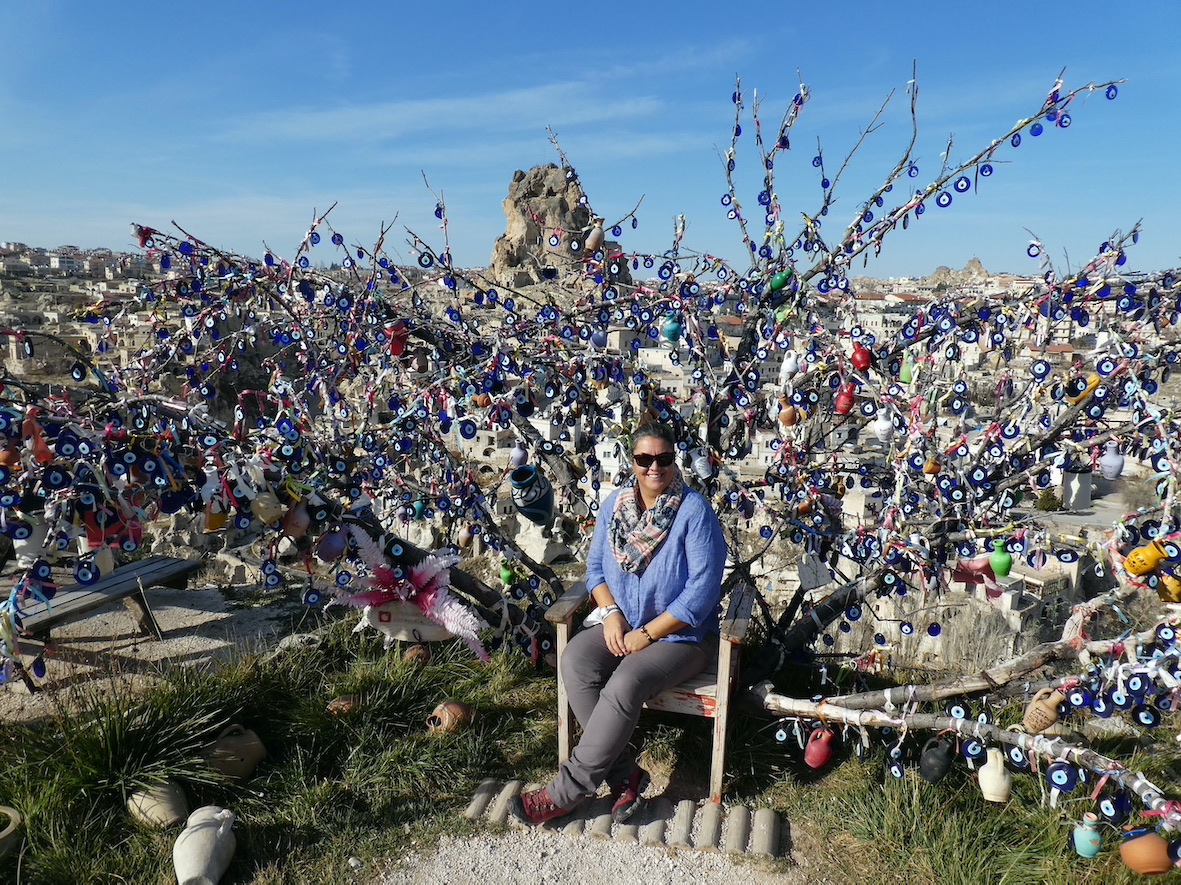




Day 5. Cappadocia


Jean trying to work the old stone circle door (hint to Jean, it is locked open with the stick in the middle)
Derinkuyu Underground City
The Derinkuyu underground city is an ancient multi-level underground city, extending to a depth of approximately 85 metres. It is large enough to have sheltered as many as 10,000 people together with their livestock and food stores. It is the largest excavated underground city in Turkey and is one of several underground complexes found throughout Cappadocia.


It could be closed from the inside with large stone doors. Each floor could be closed off separately, and had amenities such as wine and oil presses, stables, cellars, storage rooms, refectories and chapels.
The large 55-metre (180 ft) ventilation shaft appears to have been used as a well. The shaft provided water to both the villagers above and, if the outside world was not accessible, to those in hiding underground.
When were they built and WHY? The caves are believed to have initially built by the Phrygians in the 7th century BC, however in the Roman times (753 BC – 476 AD) the Christians expanded the caverns to deep multi level structures.

The city at Derinkuyu was fully formed in the Byzantine era, when they were used as protection from the Muslim Arabs during the Arab-Byzantine wars (780–1180 AD).
In short, they were built for survival. These were times when whole races/religions of people were being hunted and executed.
The city was connected with other underground cities through many kilometres of tunnels.
These cities continued to be used by the Christian natives as protection from the Mongolian incursions in the 14th century.
As late as the 20th century, the local population, Cappadocia Greeks, were still using the underground cities to escape periodic persecutions.
In 1923, the Christian inhabitants of the region were expelled from Turkey and moved to Greece in the population exchange between Greece and Turkey, whereupon the tunnels were abandoned.
In 1963, the tunnels were rediscovered after a resident of the area found a mysterious room behind a wall in his home. Further digging revealed access to the tunnel network.

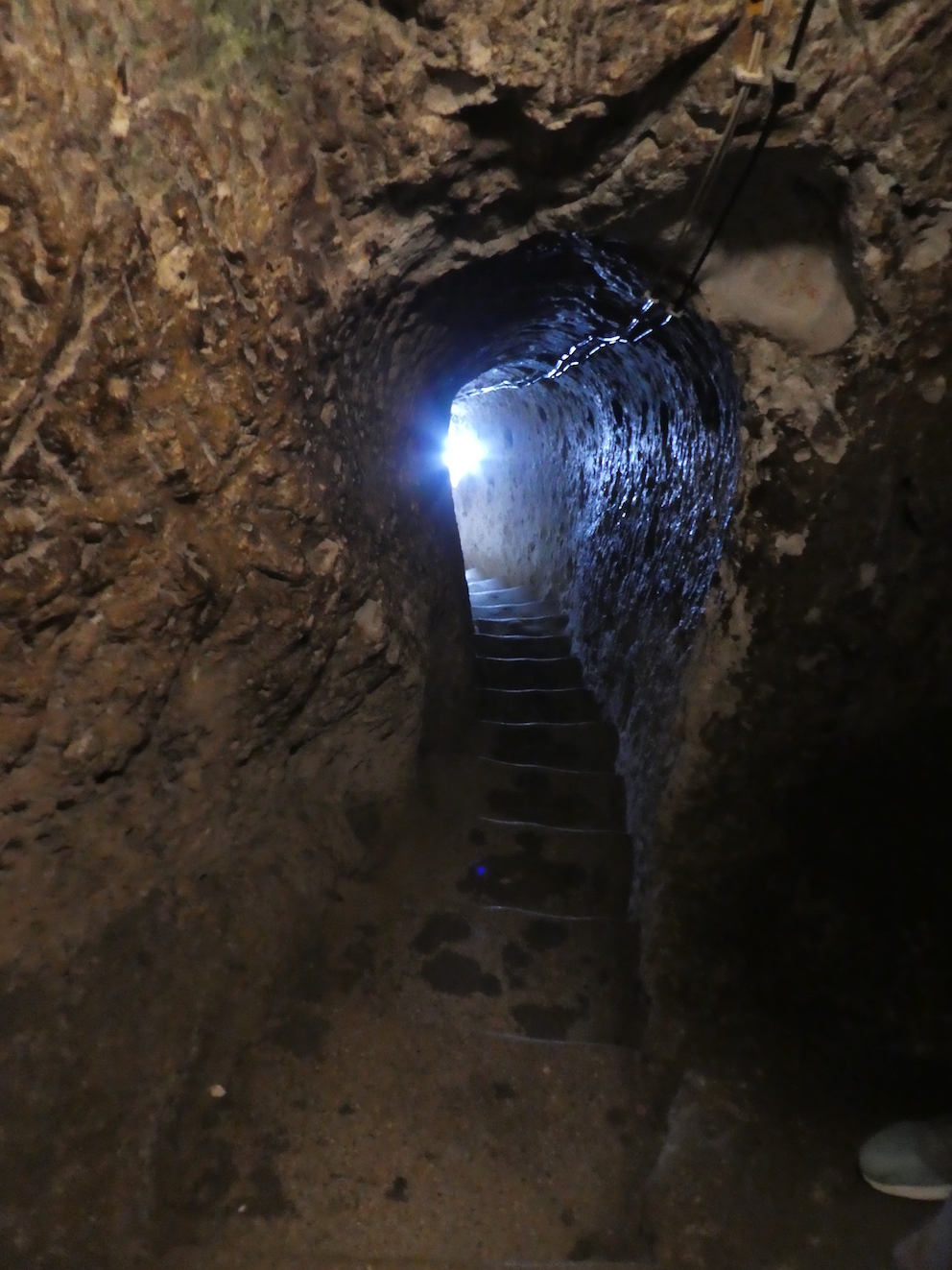


The street dog walked beside Maree the entire way (7km)
Day 6. Göreme – Silifke





Day 7. Silifke – Side



We taste tested and they are delicious!

Day 8. Side – Antalya








Enjoying Sweedish meatballs for lunch at the essential IKEA stop.
Old Town Antalya on dusk.
Day 9. Antalya – Marmais … Home
A fabulous trip enjoyed with friends. We certainly appreciate how lucky we are to be able to live and experience the culture here in Turkey and look forward to seeing more of the country.



Fabulous pics, what a country! Never realised how diverse it is, absolutely spectacular. Thanks again for sharing your experiences with us and every good wish for a happy and adventureful 2022. Love from your Cornish family.
LikeLiked by 1 person
Thankyou. It was always on my bucket list but may never get there now! Such thrilling things youve seen. Amazing. Thanks for shareing. xxxx
LikeLiked by 1 person